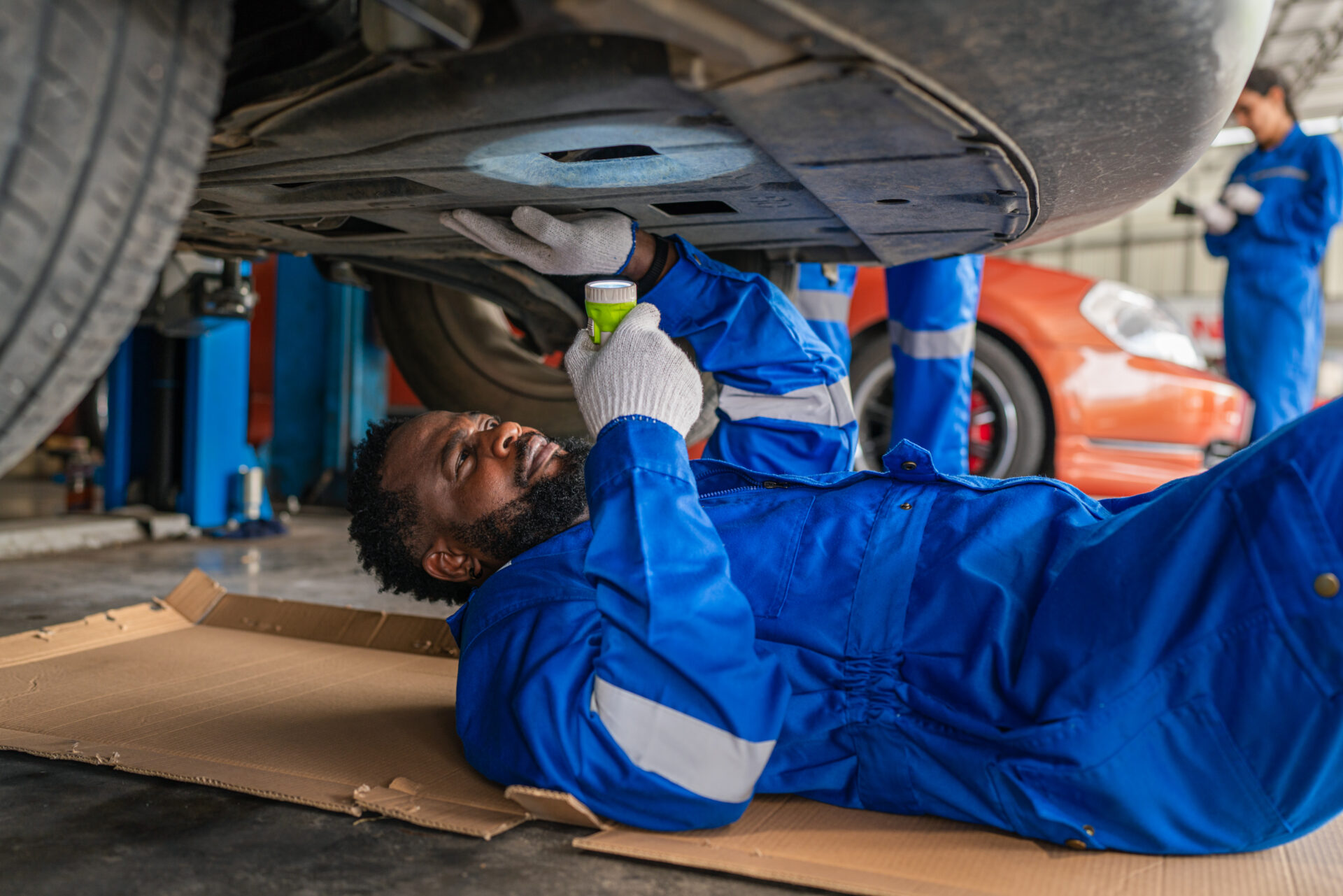
(Approx: 11 min. read)
Worried about failing your MOT? You’re not alone. Every year, millions of UK drivers face the test, and most failures result from minor, easily preventable issues such as faulty lights, worn tyres, or damaged wipers.
In this guide, we explain everything you need to know about the MOT (Ministry of Transport) test, from what’s checked to the most common reasons cars fail, as well as tips on how you can give your vehicle the best chance of passing first time.
Key facts at a glance:
- Every vehicle over 3 years old in the UK must have a valid MOT.
- The test checks your car’s safety, roadworthiness, and emissions.
- Most MOT fails are caused by simple issues like lights, tyres, and wipers.
- You can book your test up to one month early.
- Driving without a valid MOT is illegal and could result in fines up to £1000.
- An MOT usually takes around 1 hour to complete.
- Common fail reasons include lights, tyres and brakes.
- Quick checks of parts including your tyres, lights, number plate and wipers before your test can help avoid failure.
Looking for something specific? Pick a section below, or settle in for the full article.
Understanding the MOT:
Every vehicle in the UK over three years old, including EVs, must have a valid MOT test by law. Without one, you could face fines, penalty points, or even risk having your car taken off the road [1].
Not sure when your MOT is due? You can quickly check using the official online MOT checker. This free tool also lets you see your car’s testing history and previous test locations.
Understanding your MOT isn’t complicated. In this guide, we’ll cover:
- What an MOT is and why it’s important.
- What’s checked during the test.
- The most common reasons cars fail (and how to avoid them).
By the end, you’ll feel confident about your next MOT and know exactly what to expect.
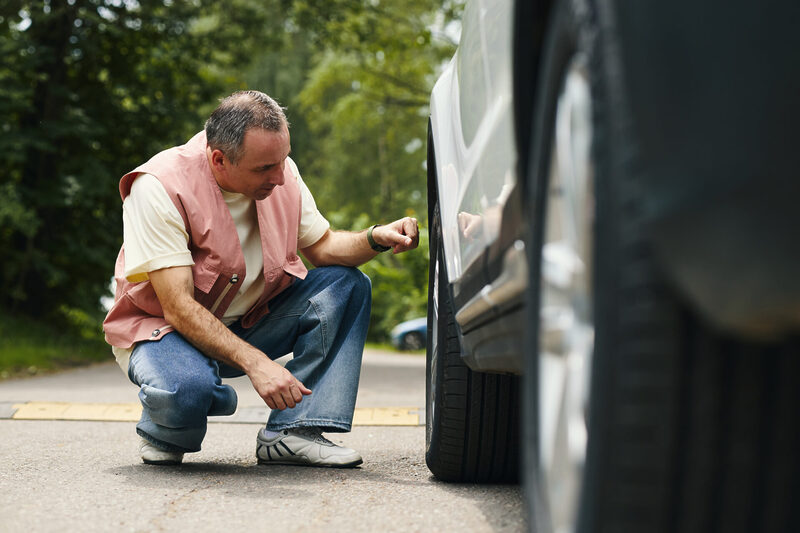
What is an MOT, and why do you need one?
The MOT is an inspection of your vehicle, checking for road safety and environmental factors.
It is a legal requirement, ensuring your vehicle is roadworthy. They also help identify potential issues that may arise in future.
Here are some of the reasons you need an MOT:
- Legal requirement:
Driving without a valid MOT is illegal, and can result in a fine of £1000.
- Safety:
The test ensures your car meets current road safety standards and helps to prevent accidents by identifying and removing unsafe or defective vehicles from the road.
- Environment:
Your car will be assessed to make sure your car is as environmentally friendly as possible.
- Resale:
A valid MOT will help the resale of your vehicle, instilling buyer confidence that the car has passed safety requirements.
Remember, even without the legal obligation, both the car and the driver benefit from a valid MOT.
How early can you book an MOT:
You can book your MOT up to one month (minus a day) before it’s due and keep the same renewal date for the following year if you choose to.
For example, if yours expires on 27th September, you can book it anytime from 28th August, and your new certificate will still run until 27th September the following year.
How much does an MOT cost?
The maximum fee for a standard car MOT in the UK is £54.85 for a passenger car with up to 8 seats [2]. Some garages offer promotional rates, so it may be beneficial to compare prices before booking.
How long does an MOT test take?
Your MOT is a thorough safety check that normally takes around an hour, but if repairs are needed, it could take longer [3]. Only authorised centres with qualified testers are allowed to carry out the assessment.
What gets checked during an MOT?
You can expect the following parts to undergo testing:
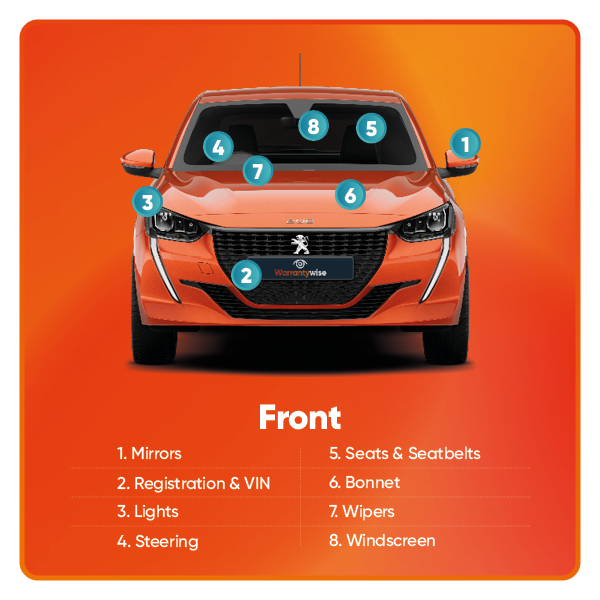
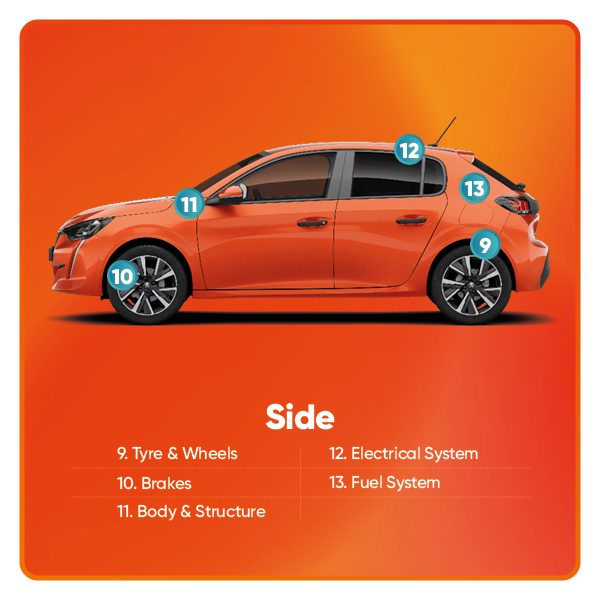
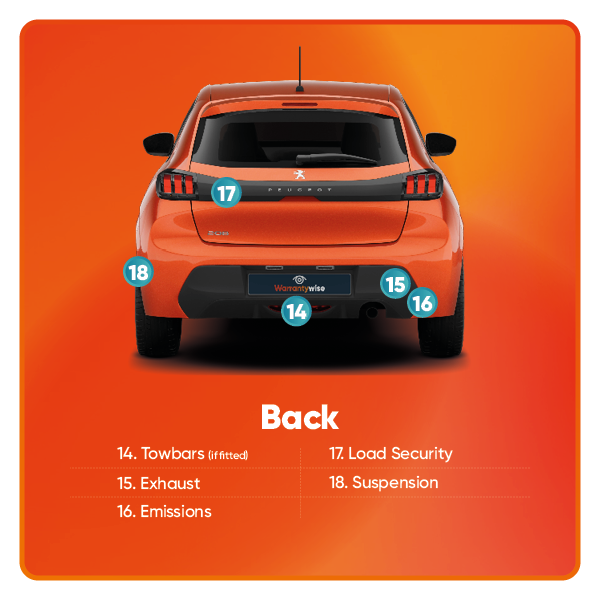
Body & structure:
- No sharp edges, dangerous rust, or serious damage.
Towbars (if fitted):
- Must be secure and safe to use.
- If your car has a 13-pin electrical socket, it must work correctly.
- Speedometer and engine mountings are also checked.
Fuel system:
- Fuel pipes and hoses must be secure and in good condition.
- No leaks.
- The fuel cap must close properly (remember to bring your key – the tester will need to open it).
Exhaust & emissions:
- Exhaust must be complete, secure, and not excessively noisy.
- If your car originally came with a catalytic converter, it must still be in place.
- Emissions are checked depending on your car’s age and fuel type.
- Diesel cars: The tester might not run the smoke test if it could damage your engine. Tell them if you’re worried.
- To help pass: keep the engine well maintained, replace the timing belt when needed, and arrive with the engine warm.
Seatbelts & seats:
- All seatbelts must be secure, in good condition, and work correctly.
- Warning lights for airbags and seatbelts will be checked.
- The driver’s seat must adjust properly.
- All seats must be fixed securely in place.
Doors & mirrors:
- Front doors must open from inside and outside.
- Rear doors must open from the outside.
- Hinges and catches must be secure.
- The car must have the minimum required mirrors, all in good condition.
Load security:
- Boot or tailgate must close securely.
Brakes:
- Brakes must be in good condition and work well.
- Warning lights for ABS, electronic stability control are checked.
Tyres & wheels:
- Tyres must be the correct size and type, secure, with at least 1.6mm tread depth.
- General tyre condition will be checked (spare tyres are not included).
- Cars registered from 2012 onwards must have a working tyre pressure monitoring system (TPMS).
Registration plates & VIN:
- Number plates must be clean, secure, with correct spacing.
- Vehicles registered after August 1980 must display a single, clearly visible Vehicle Identification Number (VIN).
Lights:
- All lights must be secure in good, working condition including indicators, brake lights, and headlights.
- Headlamps will be checked for aim, security, self-levelling (if fitted).
- Main beam warning light must work.
Bonnet, wipers & windscreen:
- The bonnet must close securely.
- Windscreen wipers and washers must function correctly and maintain a clear view.
- The windscreen must be free from significant cracks or chips, particularly within the driver’s line of sight.
Horn:
- The horn must operate correctly and produce an appropriate sound audible to other road users.
Steering & suspension:
- Checked for wear, leaks, and unsafe repairs.
- Power steering pipes and fluid must be safe.
- Steering locks and dashboard warning lights must work.
Electrical system:
- Battery and visible wires must be safe and secure.
What doesn’t get checked?
Whilst the MOT is comprehensive, the test doesn’t cover the condition of the:
- Gearbox
- Clutch
- Engine
What happens if your car fails the MOT?
When a car fails its MOT, the garage will give you a VT30 certificate showing the faults. If they’re classed as dangerous or major, you can’t drive the car again until the problems are fixed.
Not all garages offer repairs, so it’s advised to check with your chosen garage to confirm whether they offer it as part of their MOT service.
In some cases, you may be able to get a partial retest either for free or at a reduced fee. If you leave your car at the rest centre for repairs and it’s retested within 10 working days, the retest won’t cost you anything [5].
Sometimes you’ll also see minor or advisory notes. These don’t stop you from driving, but they’re warnings to get the issues repaired soon.
Most common reasons cars fail an MOT:
Many cars fail for small problems that are easy to fix. Here are the top reasons [4]:
- Lights and signalling: Broken bulbs, indicators and side lights.
- Tyres: Tread below 1.6mm, wrong pressure.
- Brakes: Worn pads or discs, warning light stays on.
- Suspension: Damaged springs and shock absorbers.
- Emissions: Producing too much smoke or harmful gas.
The good news is you can check most of these at home. Test your lights, make sure your tyres are legal and listen for brake noise before your MOT.

What about EVs?
As with internal combustion engine vehicles, all electric vehicles including hybrids over 3 years old require an annual MOT test. EV drivers need to consider where they are getting their vehicle tested and check in advance if the garage has the experience and equipment to undertake an EV MOT.
Differences in EV MOTs:
Most of the checks undertaken on ICE cars are the same ones that will be assessed in EVs, however there are some differences unique to electric vehicles.
The following will not be tested:
- Emissions
- Exhaust pipes
- Fuel system
- Engine components
The following additions will be tested:
- Batteries: Must be secure and in good condition.
- Electric motors: Checked for safety and operation.
- High-voltage EV charging systems: Must work safely with no faults.
- Cabling systems: Must be secure and free from damage.
Most common reasons EVs fail an MOT:
Similar to ICE vehicles, the top reasons EVs fail in 2025 are [6]:
- Tyres
- Brakes
- Windscreen wipers
- Lights
- Battery and wiring
You might not be able to check the battery and wiring yourself, but a quick look at your tyres, lights and wipers at home could help to avoid simple MOT fails.
How to give your car the best chance of passing:
There are some pre-MOT checks you can run through before taking your car to the garage.
- Tyres: Tread depth must be 1.6mm (you can use the 20p test below for this), and tyre pressure must be within the recommended range.
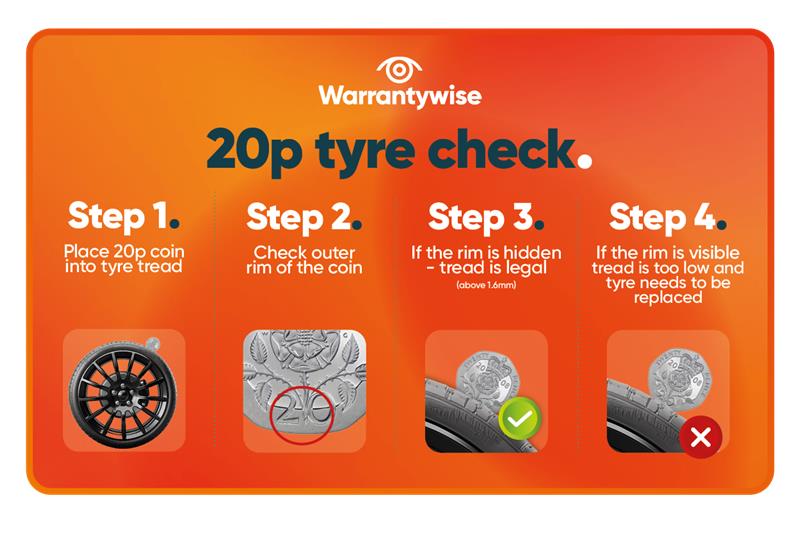
- Lights:
Check all your lights – headlights, rear lights including reverse, hazards and indicators – are in working order.
- Number plate:
Should be clean, legible, and in a legal font with correct spacing.
- Wipers, horn and seatbelts:
Wipers should be able to clear rainwater and keep your windscreen clean. The horn should be loud enough to be heard by other road users, and all seatbelts need to be the correct length and in good working order (give them a sharp pull to make sure they lock in place).
- Windows and windscreen:
Your car will fail if the windscreen has cracks longer than 40mm, or chips bigger than 10mm in the part of the windscreen cleared by the driver’s wipers.
- Engine oil:
For ICE vehicles, there must be sufficient levels of engine oil and fuel in the car for the examiner to assess your vehicle.
- Brakes:
If you hear any grinding or screeching, or your brake pedal feels spongey, these could be signs that you need your brakes looked at.
EV MOT preparation: Extra steps to check:
In addition to the checks above, EV drivers can do also take a quick look at their cabling to make sure it’s secure and free from visible damage.
MOT peace of mind with Warrantywise:
Of course, some failures are harder to predict. That’s where Warrantywise can give you extra peace of mind. Depending on the plan you choose, MOT Failure is included as standard on some and available as an optional addition on most. It means we’ll help with the cost of repairs if your car doesn’t pass, so you can avoid surprise bills and stay safely on the road.
Book your MOT in good time, use the official checker to stay on track, and remember that with Warrantywise, you don’t have to face MOT failures alone.

Conclusion:
The MOT is more than just a legal requirement – it’s there to keep you and your car safe on the road. While the test can feel stressful, most failures are caused by simple issues like bulbs, tyres, or wipers that you can check at home. Taking a few minutes to prepare before your test could save you time, money, and worry.
Discover more.
Further Warrantywise articles you might find useful

Millions of UK drivers can’t identify their dashboard warning lights.
Nearly half of UK drivers don’t know what their dashboard warning lights mean, yet these symbols can signal serious problems. … Continued

Delaying repairs is costing you more than you realise.
(Approx: 6min read) Delaying repairs or maintenance on your vehicle might seem like a harmless way to save money in … Continued

Top 10 most reliable car models 2025.
(Approx: 3min read) In an age where automotive innovation is accelerating faster than ever, reliability remains paramount for UK used … Continued